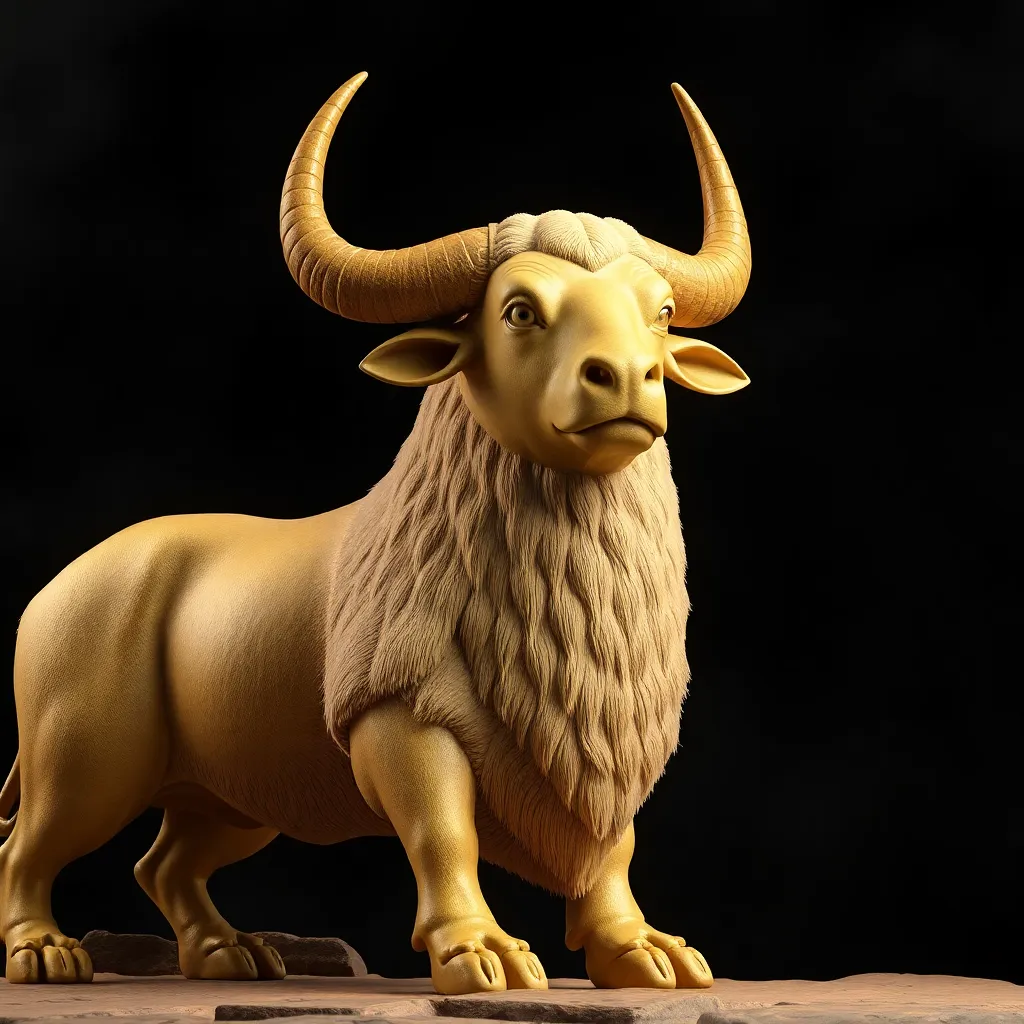The Apis Bull: Myths of Creation and Cosmic Order
I. Introduction
The Apis Bull holds a unique and significant place in ancient Egyptian culture, revered as a manifestation of divine power and a central figure in various creation myths. This sacred bull was not merely an animal but a symbol of fertility, strength, and the cosmic order that governed the universe. The purpose of this article is to delve into the historical context, symbolism, myths, and modern interpretations of the Apis Bull, shedding light on its crucial role in ancient Egyptian beliefs.
II. Historical Context of the Apis Bull
Archaeological findings reveal that worship of the Apis Bull dates back to the early dynastic period of Egypt, with evidence found in temples dedicated to the bull in Memphis. The Apis Bull was closely associated with the god Ptah and was believed to embody the soul of Osiris, the god of the afterlife.
- Origins: The Apis Bull was often seen as a representation of the fertility of the land, linked to the annual flooding of the Nile.
- Role in Religion: The bull was venerated in temples, and its death was marked by elaborate mourning rituals.
- Comparison with Other Deities: Similar to other ancient deities like the golden calf in Hebrew tradition, the Apis Bull represented a bridge between the divine and the earthly realms.
III. Symbolism of the Apis Bull
The Apis Bull symbolizes various aspects of life, death, and rebirth, making it a complex figure in Egyptian mythology.
- Fertility and Agricultural Abundance: The bull was associated with the fertility of the land and the prosperity that followed the Nile’s inundation.
- Connection to the Afterlife: The Apis Bull was believed to guide souls in the afterlife, reinforcing its role in the cycle of life and death.
- Manifestation of Divine Power: The bull embodied the strength and authority of the pharaoh, who was seen as a living god on earth.
IV. Myths of Creation Involving the Apis Bull
In Egyptian mythology, creation narratives often include the Apis Bull, particularly in the context of Atum, the creator god. The following are key points regarding its involvement in these myths:
- Narrative of Creation: The Egyptians believed that Atum created himself from the primordial waters of Nun, and the Apis Bull emerged as a symbol of life and fertility.
- Role in the Myth of Atum: The Apis Bull is sometimes depicted as part of the divine birth of gods, emphasizing the connection between the bull and the creation of life.
- Symbolic Interpretations: Different myths highlight the Apis Bull’s role as a nurturer and protector, crucial for the continuation of life.
V. The Apis Bull and Cosmic Order (Maat)
Maat, the concept of cosmic order and balance, was central to Egyptian cosmology. The Apis Bull was seen as a guardian of this order.
- Explanation of Maat: Maat represented truth, justice, and harmony, and was personified by the goddess Maat.
- Guardian of Cosmic Order: The Apis Bull was believed to help maintain this balance through rituals and sacrifices.
- Rituals and Practices: Priests performed ceremonies involving the Apis Bull to ensure the stability of Maat, reinforcing the bull’s importance in society.
VI. The Apis Bull in Art and Iconography
The Apis Bull has been depicted in various forms of ancient Egyptian art, showcasing its significance in the culture.
- Depictions in Art: Statues and reliefs often portray the Apis Bull with distinctive markings, emphasizing its divine nature.
- Artistic Analysis: The representation of the bull in art often conveys themes of strength, protection, and fertility.
- Influence on Later Cultures: The symbolism of the Apis Bull influenced other cultures and religions, seen in the reverence for bulls in various traditions.
VII. Modern Interpretations and Relevance
In contemporary society, the legacy of the Apis Bull continues to resonate in various ways.
- Contemporary Spiritual Practices: Some modern spiritual groups draw inspiration from the Apis Bull as a symbol of strength and fertility.
- Symbolic Relevance: Discussions about creation and order in the universe often reference ancient myths, including those of the Apis Bull.
- Influence on Popular Culture: The Apis Bull has appeared in literature, films, and art, signifying its enduring presence in the cultural narrative.
VIII. Conclusion
The Apis Bull’s significance in ancient Egyptian mythology and its role in maintaining cosmic order through Maat are profound. It embodies the interconnectedness of life, death, and the divine, leaving a lasting legacy that continues to inspire both spiritual and cultural discussions today. Exploring the myths and meanings surrounding the Apis Bull opens a window into the rich tapestry of ancient Egyptian beliefs and their relevance in our modern world.




